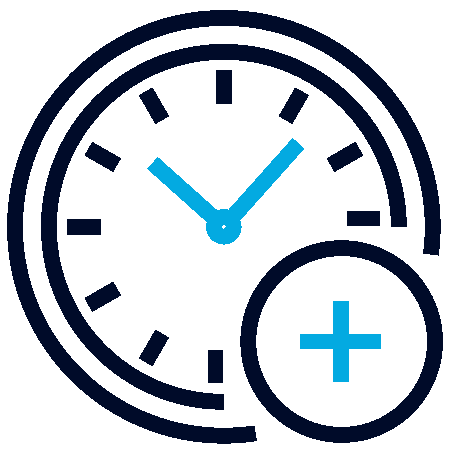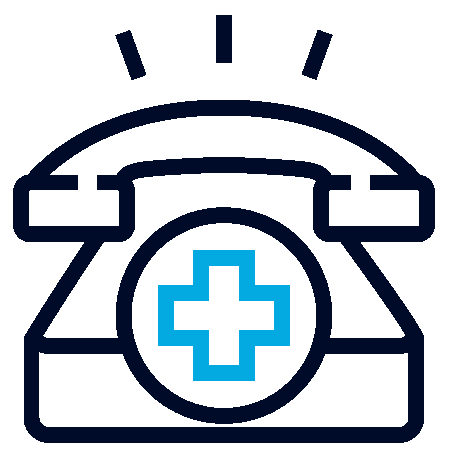Son güncelleme 4 July 2025 by ömer bozdurman
Tennis elbow, medically known as lateral epicondylitis, is a painful condition caused by inflammation or degeneration of the tendons in the elbow due to overuse or improper movements. It typically results from repetitive hand and wrist motions and can affect not only tennis players but anyone whose daily activities involve intense hand use. If not addressed early, the condition can become chronic, significantly reducing quality of life.
What is Tennis Elbow?
Tennis elbow is a condition characterized by damage to the tendons that attach to the lateral epicondyle, a bony prominence on the outer side of the elbow. Micro-tears or inflammation occur in the tendons of the extensor muscles, which control hand and wrist movements. This leads to pain and tenderness in the elbow, particularly during activities like grasping, lifting, or wrist movements. For example, pain may be felt when holding a coffee cup or turning a doorknob. While it can occur in any age group, it is most common in individuals aged 30-50. Although named after tennis players, where it is frequently observed, it also affects carpenters, painters, office workers, and homemakers.
Symptoms of Tennis Elbow
Tennis elbow symptoms typically begin with pain and tenderness on the outer side of the elbow. The pain may worsen over time and spread to other parts of the arm. Common symptoms include:
- Sharp or burning pain on the outer elbow.
- Increased pain during activities like handshaking, lifting objects, writing, or opening doors.
- Weakness when lifting or bending the arm.
- Pain radiating to the forearm, wrist, or hand.
- Stiffness or restricted movement in the elbow, especially in the morning.
- Increased pain after prolonged keyboard use or carrying heavy objects.
For instance, an office worker may notice elbow pain after using a mouse all day, or a tennis player may feel tenderness after backhand shots. If symptoms are not addressed early, the pain can become chronic and significantly impact daily life.
What Causes Tennis Elbow?
Tennis elbow is caused by overloading, improper use, or repetitive strain on the tendons. The main causes include:
- Repetitive Movements: Activities like tennis, badminton, painting, typing, or using tools such as screwdrivers or hammers stress the tendons.
- Incorrect Technique: Improper racket grip in tennis, faulty golf swings, or using unsuitable sports equipment increase risk.
- Overloading: Lifting heavy objects, sudden strenuous movements, or frequent wrist motions cause micro-tears in the tendons.
- Age and Muscle Weakness: As people age, tendons lose elasticity, and healing slows, increasing injury risk.
- Non-Ergonomic Environment: Prolonged computer use in improper positions or poorly designed chairs/keyboards can harm tendons.
For example, a carpenter’s repeated hammer use or a secretary’s work with a non-ergonomic keyboard can lead to tendon damage.
How is Tennis Elbow Diagnosed?
Tennis elbow is typically diagnosed through a physical examination by a doctor, who evaluates the patient’s medical history and symptoms. Diagnostic methods include:
- Physical Examination: The doctor applies pressure to the elbow to check for tenderness. Tests like the Cozen’s test assess pain triggers during specific movements.
- Imaging Tests: X-rays rule out bone or joint issues. Magnetic resonance imaging (MRI) or ultrasound provides detailed views of tendon tears.
- Electromyography (EMG): Rarely used to exclude nerve damage (e.g., carpal tunnel syndrome).
The diagnostic process is usually non-invasive and completed quickly. Additional tests may be required if symptoms suggest another condition.
Which Doctor Treats Tennis Elbow?
Tennis elbow is typically treated by an Orthopedics and Traumatology specialist.
How is Tennis Elbow Treated?
Tennis elbow treatment is tailored to the patient’s condition, pain severity, and duration of symptoms. Most cases resolve with conservative methods. Treatment options include:
Physical Therapy Methods
Physical therapy plays a central role in recovery from tennis elbow. Methods guided by a physiotherapist include:
- Ultrasound Therapy: Reduces tendon inflammation and improves blood flow.
- Transcutaneous Electrical Nerve Stimulation (TENS): Low-voltage currents alleviate pain.
- Massage and Manual Therapy: Relieves muscle tension and supports tendon healing.
- Tennis Elbow Brace: Supportive bands applied to the elbow reduce tendon stress and ease pain during movement. These are widely used in daily life and sports.
Physical therapy is typically administered in regular sessions over 6-12 weeks. For example, a patient attending 2-3 sessions weekly may notice significant pain relief.
Injection Therapy Methods
If conservative treatments are insufficient, injection therapies may be considered:
- Corticosteroid Injections: Quickly reduce pain and inflammation, but long-term use may weaken tendons.
- Platelet-Rich Plasma (PRP): Plasma derived from the patient’s blood accelerates natural tendon healing. PRP has gained popularity in recent years.
- Botulinum Toxin Injections: Rarely used to reduce muscle spasms when other methods fail.
Tennis Elbow Treatment in Samsun
In Samsun, tennis elbow treatment is provided at Assoc. Prof. Dr. Ömer Bozduman’s Orthopedics Clinic. The clinic offers comprehensive services, including physical therapy, injection treatments, exercise programs, and, if necessary, surgical intervention. Patients seeking treatment in Samsun can contact the clinic for a personalized treatment plan. The clinic provides recommendations like tennis elbow braces and specialized exercise equipment to support at-home treatment.
How is Tennis Elbow Resolved?
Resolving tennis elbow requires a patient and disciplined treatment process, which may take weeks to months. Steps for recovery include:
- Rest: Avoid activities causing pain, but maintain controlled movement rather than complete immobility.
- Ice Application: Apply an ice pack for 15-20 minutes, 2-3 times daily, to reduce inflammation and pain.
- Medications: Nonsteroidal anti-inflammatory drugs (NSAIDs) like ibuprofen, naproxen, or paracetamol relieve pain and swelling.
- Exercises: Tennis elbow exercises, guided by a physiotherapist, strengthen muscles and improve tendon flexibility.
- Surgery: Rarely, when conservative treatments fail, surgery to repair damaged tendons may be needed. Post-surgical physical therapy is critical for full recovery.
For example, a patient combining rest, ice, and physical therapy may experience significant improvement in 8 weeks.
What Should People with Tennis Elbow Pay Attention To?
To speed recovery and prevent recurrence, individuals with tennis elbow should:
- Limit activities causing pain (e.g., avoid heavy lifting or repetitive wrist motions).
- Use proper equipment, such as correct racket grips in tennis or ergonomic keyboards/mice at work.
- Wear supportive devices like tennis elbow braces to protect the elbow.
- Follow physiotherapist-recommended exercises regularly.
- Avoid prolonged repetitive movements and take frequent breaks.
- Steer clear of extreme cold or hot environments, as these can increase muscle tension.
What Happens if a Tennis Elbow is Left Untreated?
Untreated tennis elbow can lead to chronic pain, permanent tendon damage, and restricted movement. Pain may spread to the forearm, shoulder, and hand, significantly complicating daily activities. For instance, an untreated patient may struggle to carry a grocery bag. Weakened tendons also increase the risk of more serious injuries. Early intervention reduces complication risks.
How to Prevent Tennis Elbow
To prevent tennis elbow, follow these steps:
- Use correct techniques and appropriate equipment during sports (e.g., proper racket weight in tennis).
- Perform regular tennis elbow exercises to strengthen muscles.
- Optimize your workspace ergonomically (e.g., use wrist-supporting keyboards or mouse pads).
- Avoid overloading and take rest breaks.
- Warm up and stretch muscles before activities.
- Apply proper warm-up techniques before lifting weights or sports.
Who is Affected by Tennis Elbow?
Tennis elbow affects individuals with intense hand and wrist activity, including:
- Athletes: Tennis, golf, badminton, weightlifting, or swimming participants.
- Manual Laborers: Carpenters, painters, plumbers, barbers, butchers.
- Office Workers: Those using computers, keyboards, or mice for extended periods.
- Homemakers: Individuals performing repetitive household tasks (e.g., cleaning, cooking, dishwashing).
- Musicians: Violinists, pianists, or guitarists.
For example, a violin virtuoso may experience elbow pain after prolonged practice.
Tennis Elbow Exercises
Tennis elbow exercises strengthen tendons, increase flexibility, and reduce pain. Exercises should be performed without causing pain.
Stretching Exercises
- Wrist Stretch: Extend the affected arm, use the other hand to pull fingers downward to stretch the wrist. Hold for 30 seconds, repeat 3 times. This stretches forearm muscles and reduces tension.
- Forearm Stretch: Extend the arm with the palm facing up, pull fingers back with the other hand. Hold for 30 seconds, repeat 3 times.
- Ball Squeeze: Squeeze a stress ball or soft ball for 5-10 seconds, then release. Perform 2-3 sets of 10 repetitions daily to boost muscle strength and circulation.
Strengthening Exercises
- Wrist Lift: Using a light dumbbell (1-2 kg), lift the wrist upward and lower slowly. Perform 2 sets of 10-15 repetitions daily.
- Pronation-Supination: Hold a light weight (e.g., a small water bottle) and rotate the arm inward and outward. Perform 2 sets of 15 repetitions daily.
If exercises cause pain, stop and consult a specialist. For example, a patient performing these exercises regularly may notice strength improvements in 4-6 weeks.
Frequently Asked Questions About Tennis Elbow
How Do You Know if You Have Tennis Elbow?
Suspect tennis elbow if you feel pain, tenderness, and weakness in the outer elbow during hand or wrist movements. For example, pain while carrying a grocery bag or shaking hands is a key indicator. Consult an orthopedic specialist for a definitive diagnosis.
How Does Tennis Elbow Heal Quickly?
Rest, ice application, tennis elbow braces, physical therapy, and regular exercises accelerate healing. Medications or injections recommended by a doctor can also help. For instance, a patient with regular physical therapy may experience significant relief in 6-8 weeks.
Should You Apply Cold or Heat for Tennis Elbow?
In the acute phase (first 48-72 hours), apply cold (ice packs) to reduce inflammation. For chronic pain, heat can relax muscles and improve circulation. Limit applications to 15-20 minutes.
How is Tennis Elbow Swelling Reduced?
Ice application, elevating the arm, and physical therapy reduce swelling. Anti-inflammatory medications prescribed by a doctor may also help. Techniques like lymphatic drainage massage can be effective.
Does Tennis Elbow Pain Radiate to the Hand?
Yes, pain can spread to the forearm, wrist, and hand due to tendon inflammation or muscle tension. Weakness or numbness in the hand warrants medical attention.



